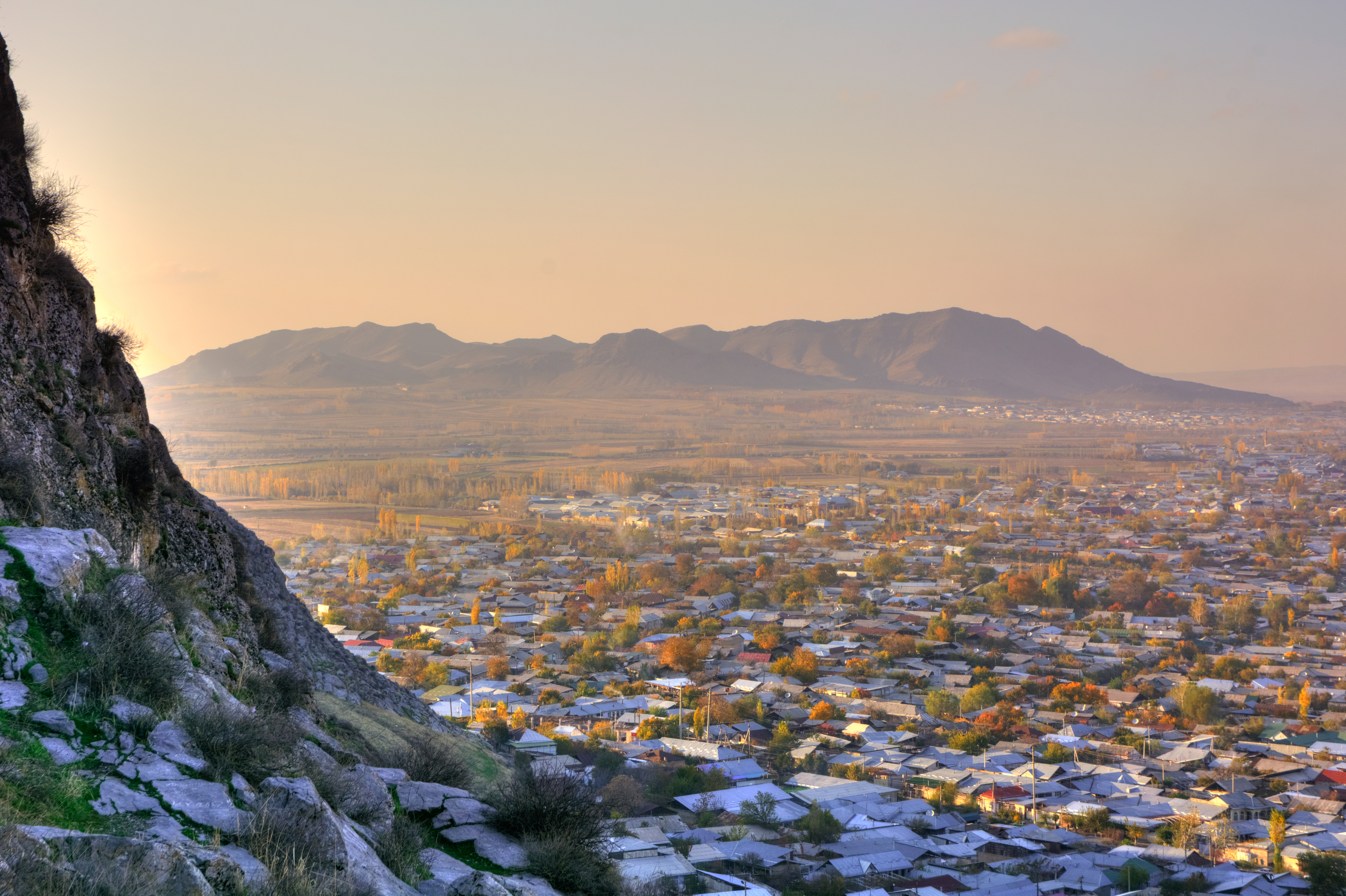Sulaiman-Too Sacred Mountain
For centuries - even millennia - Osh has been an important stop along the Silk Road. For travellers approaching the city, Sulaiman-Too mountain can be seen from miles away and it's long acted as a landmark for travellers navigating their way through the region. Although Kyrgyzstan is renowned for its mountains, Osh is part of another landscape. This is the wide Fergana Valley, a remarkably flat region that spreads across Kyrgyzstan and Uzbekistan, facilitating the easier movement of goods and trades from east to west.

The city itself became a wealthy stop along the ancient trading routes because the Sulaiman-Too rock, in an otherwise featureless land, drew in traders from far away who could easily navigate their way to Osh with its help. Over time, this dramatic outcrop took on more spiritual and sacred connotations too. Now Osh (Kyrgyz: Ош) is the second largest city in Kyrgyzstan and is often referred to as the "capital of the south". With influences from nearby Uzbekistan, it's a vibrant city with street art and a wonderful food scene.

The Sulaiman-Too Sacred Mountain is named for Solomon, a character from the Quran and the other monotheist religions, but the natural landmark had been worshipped in other ways for many years before the arrival of Islam in the region. Petroglyphs carved into the rock and other prehistoric artefacts found in the caves show that it has long been an important site for locals and nomads.
History & Today
For as long as humans have inhabited the land around the mountain, Sulaiman-Too has been involved in local culture, traditions and religion. Across the rocky outcrop can be found the evidence of past practices associated with the mountain, including petroglyphs and even fertility slides.
On the rock face and in the many caves are found ancient drawings and works of art, while even today, the ritual of sliding down certain sections of the mountain is undertaken by women seeking to become pregnant, such is the spiritual strength of Sulaiman-Too for many. And of course, in the modern world, the tallest point in Osh is now home to signal masts and phone towers providing communications across the city. In more recent decades during Soviet rule in Kyrgyzstan, many of the religious monuments and shrines found on Sulaiman-Too were destroyed as the authorities attempted to stamp out religion.
At the top of the mountain the cave museum displays a wonderful collection of artefacts and objects that traced back the history of Sulaiman-Too from prehistoric times, through to its use in Zoroastrian fire worshipping rituals, its use as an Islamic holy place and onto the present day. The museum is found within an enormous cavern in the centre of the mountain, a dimly lit place where exhibits are built into the rock. It’s an intriguing setting to learn more about the significance of Sulaiman-Too.

A path leading up the mountain takes you past the ancient sites of worship, some dating back thousands of years. Amongst the natural shrines are more modern installations, such as a small mosque at one end of a ridge. Most of Sulaiman-Too is undeveloped, though, with the power of the mountain coming from its geological formations. In the centre, a large cavern has been converted into a museum containing a collection of archaeological, scientific and historical finds, along with information about local flora and fauna.
How to get there
There are two entrances to the mountain, on the east and one on the west side. The eastern side entrance is found just along from the Archeological Museum – not to be confused with the Cave Museum, which is on the mountain itself. This is the steeper way up, which leads directly to the Islamic shrine at the top. The path then continues along to the Cave Museum, and back out onto the main road by the western entrance. The mountain itself is 200 meters high and is found in the centre of Osh - it’s really not hard to miss once you are in the city.
When to visit
Osh has a continental climate with hot and dry summers and cold and snowy winters. The hottest month is July and the coldest month is January. The best time to visit Osh is during late spring or early autumn when the weather is pleasant and more welcoming. It is also recommended to enjoy Osh for at least one to two days.
Sights and Attractions recommended by the locals
Sulaiman-Too Sacred Mountain
The Sulaiman-Too Sacred Mountain is open from 08:00 am till 18:00 pm.
You will need 150 som for the entry ticket.
The train up costs 30 som while the train to come down is 20 som.
